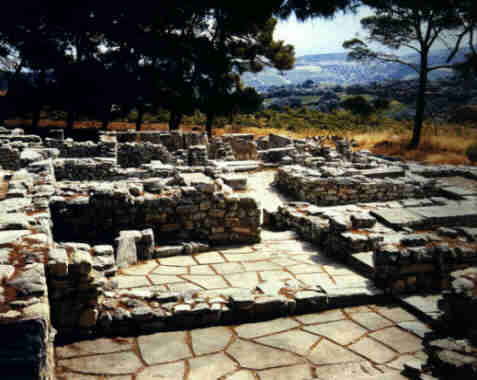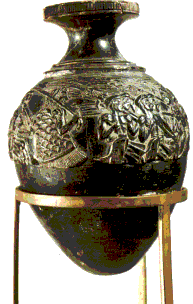

Four kilometers west from Phaistos are the ruins of the Royal Villa, the Small Minoan Palace at Agia Triada. The site is named after the village of Agia Triada that is located next to it and was inhabited untill 1.897, when the Turks destroyed it. The Minoan name of the site is unknown .
Regular public transportation is available.

The small Palace served as a summer residence for the King of Phaistos, and consists of two sections, one section stretching towards the north, the other towards the west.
The king's appartment is behind a large terrace and includes, among other areas, the main hall with columns, an arcade, the main room, the archive room, a small room decorated with valuable frescoes and the treasury where the most interesting finds were made.
To the south are store rooms and servants' quarters. Some of the most important findings of the Minoan period were excavated in Agia Triada and are currently on display at the Archaelogical museum of Iraklion. These include three engraved clay vessels of exemplary artistic value (see photo).
Another important finding in the area are the ruins of the nekropolis of Agia Triada . Numerous graves were found there including two vaulted tombs. The famous Sarcophagus of Agia Triada was found there.
The site was settled during the neolithic ages as demonstrated by the numerous findings on the area. The Small Palace was built c. 1.600 B.C. and is believed to have served as the summer residence of the king of Phaistos. It was connected to the main palace at Phaistos by a paved road.
Civilization in Agia Triada followed the way of all Minoan sites in Crete. The Palace was destroyed in 1.450 b.c., when the Palaces of Knosos and Phaistos were also destroyed. On the ruins a new splendid palace was built, that was occupied untill the Geometric period, when it started serving as a temple.
 © Interkriti 1996
© Interkriti 1996 